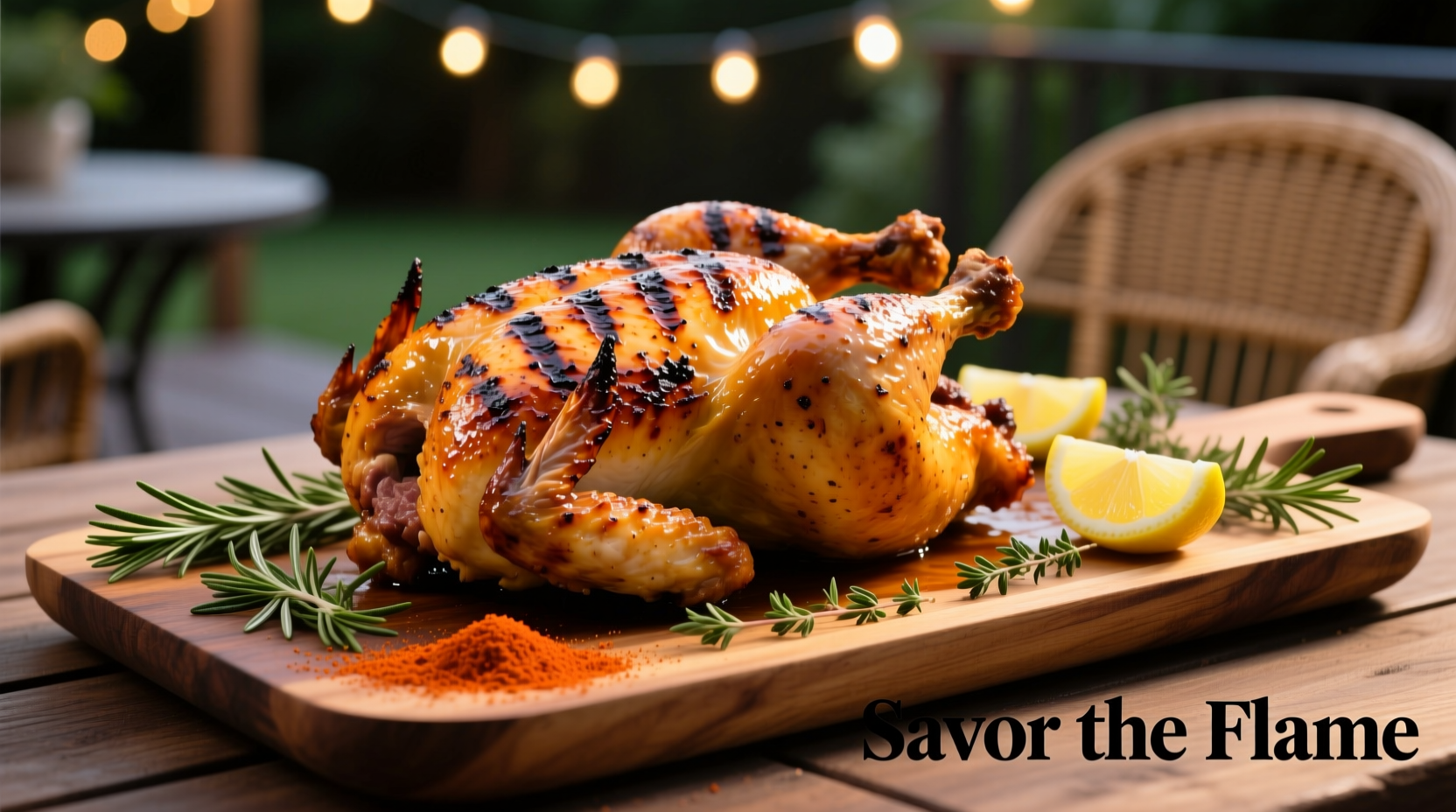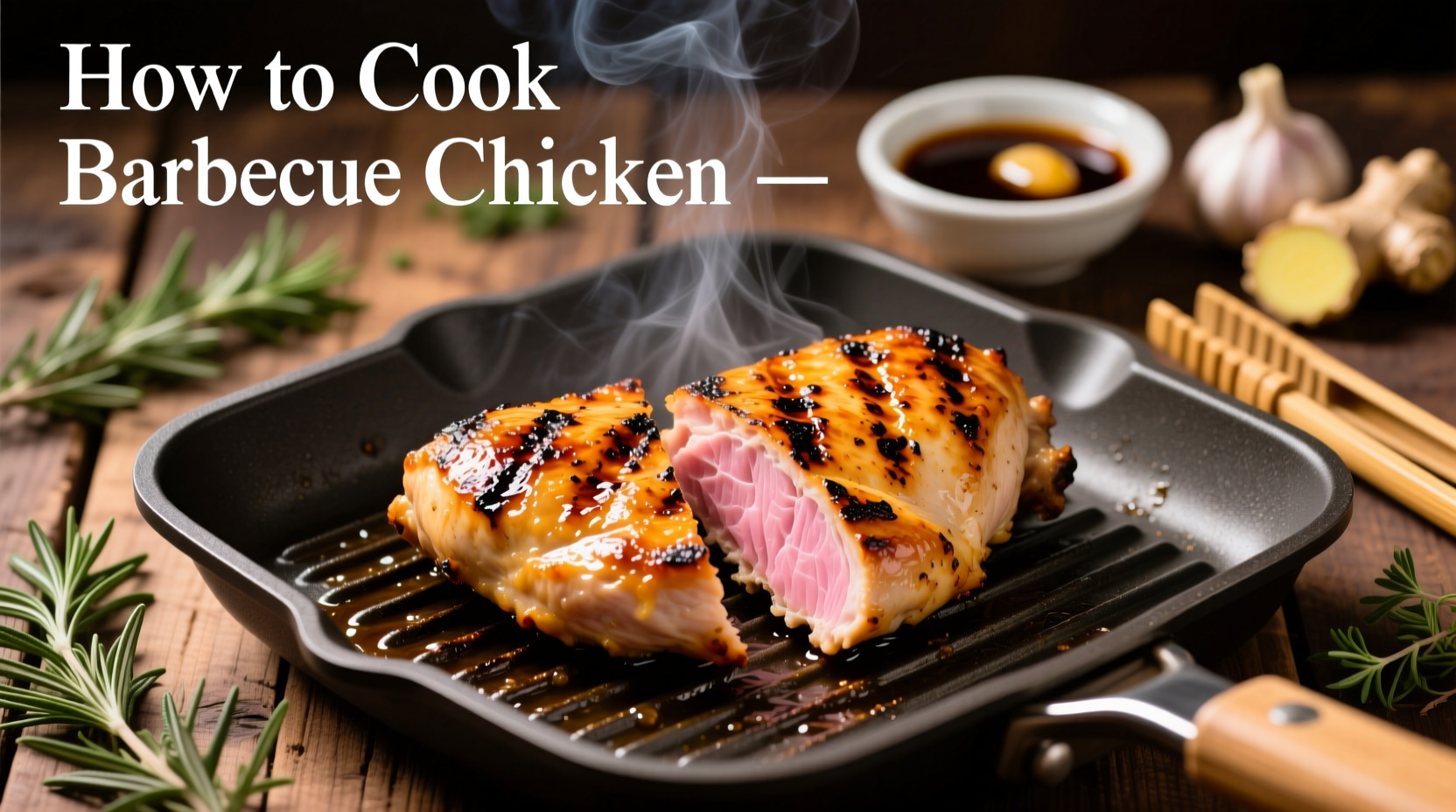Perfect barbecue chicken requires properly seasoned meat cooked to 165°F internal temperature. Start with bone-in, skin-on chicken pieces, marinate for 2-12 hours, then cook using indirect heat at 300-350°F until done. Baste with sauce during the final 15 minutes for optimal flavor without burning.
The Essential Path to Perfect Barbecue Chicken
Nothing says summer gathering like perfectly cooked barbecue chicken. Whether you're using a gas grill, charcoal setup, or smoker, achieving that ideal balance of smoky flavor, juicy meat, and crispy skin requires understanding the cooking process from preparation to plating. After testing dozens of methods across various equipment types, we've refined the most reliable approach that works for beginners and experienced grill masters alike.
Before You Fire Up the Grill: Your Preparation Checklist
Successful barbecue chicken starts long before the grill gets hot. Proper preparation prevents common pitfalls like dry meat, uneven cooking, or unsafe temperatures.
Selecting the Right Chicken
For best results, choose bone-in, skin-on pieces. The bone helps conduct heat evenly while the skin protects the meat and creates that desirable crispy texture. Thighs and drumsticks work particularly well as they're more forgiving than breasts, which can dry out quickly. According to USDA food safety guidelines, always keep raw poultry below 40°F until ready to use and prevent cross-contamination with other foods.
Marinating for Maximum Flavor
Marinate your chicken for 2-12 hours. Acidic components like vinegar or citrus juice help tenderize while oil carries flavors into the meat. For food safety, always marinate in the refrigerator, never at room temperature. A basic marinade should include:
- 1/4 cup oil (olive, canola, or avocado)
- 2 tablespoons acid (vinegar, lemon juice, or Worcestershire sauce)
- 2-3 cloves minced garlic
- Salt and pepper to taste
- Your preferred spices (paprika, cumin, or onion powder work well)
| Cooking Method | Temperature Range | Approximate Cooking Time | Best For |
|---|---|---|---|
| Charcoal Grill | 300-350°F | 35-45 minutes | Traditional smoky flavor |
| Gas Grill | 325-375°F | 30-40 minutes | Convenience and temperature control |
| Smoker | 225-275°F | 1.5-2 hours | Deep smoke penetration |
| Oven | 375°F | 35-45 minutes | Indoor cooking option |
The Cooking Process: Step-by-Step Success
Setting Up Your Grill for Indirect Heat
One critical mistake many home cooks make is cooking chicken directly over flames. Instead, set up for indirect heat by arranging coals to one side of a charcoal grill or turning off burners on one side of a gas grill. This creates a 'safety zone' where chicken can finish cooking without burning. The USDA Food Safety and Inspection Service confirms that cooking poultry at moderate temperatures (300-350°F) reduces the risk of harmful bacteria while preventing charring that can create potentially harmful compounds.
Grilling Timeline for Perfect Results
- Prep the grill: Clean grates and oil them to prevent sticking
- Place chicken skin-side down: Start on the indirect heat side, skin down
- Cook covered: Maintain consistent temperature (check every 15 minutes)
- Flip halfway: When skin releases easily from grates
- Check temperature: Insert thermometer into thickest part, avoiding bone
- Apply sauce: During final 15 minutes to prevent burning
- Rest before serving: 5-10 minutes to redistribute juices
The evolution of barbecue chicken techniques shows how methods have adapted to modern equipment while preserving traditional principles. In the 1950s, backyard grilling became popular with the rise of affordable charcoal grills, focusing on direct heat methods. By the 1980s, understanding of indirect heat techniques improved results significantly. Today's precision temperature control through digital thermometers and pellet smokers represents the current stage in this culinary evolution.

Troubleshooting Common Barbecue Chicken Problems
Preventing Dry Chicken
Dry barbecue chicken usually results from overcooking or improper heat management. Always use a meat thermometer to verify doneness rather than guessing by time alone. Chicken is perfectly cooked at 165°F internal temperature. Remove it from the grill at 160°F, as residual heat will continue cooking it during resting.
Avoiding Burnt Sauce
Sugary barbecue sauces burn easily. To prevent this, apply sauce only during the final 10-15 minutes of cooking. For extra protection, create a barrier by applying a thin layer of mustard or olive oil before adding sauce.
Handling Flare-Ups
When fat drips cause sudden flames, move chicken to the indirect heat zone immediately. Keep a spray bottle of water nearby for emergencies, but remember that closing the grill lid is often the most effective way to extinguish flames by cutting off oxygen.
Serving and Storage Guidelines
Allow barbecue chicken to rest for 5-10 minutes before serving. This crucial step lets juices redistribute throughout the meat. For food safety, serve immediately or keep warm above 140°F. Leftovers should be refrigerated within two hours (one hour if temperatures exceed 90°F) and consumed within 3-4 days according to USDA guidelines.
When reheating, use an oven or toaster oven rather than a microwave to maintain texture. Place chicken in a covered dish with a splash of broth or water to prevent drying, heating to 165°F internal temperature.











 浙公网安备
33010002000092号
浙公网安备
33010002000092号 浙B2-20120091-4
浙B2-20120091-4